I remember the challenge. It came from a Principal I respected. It was the right call, but I did not have an answer – at that time.
I was delivering training, not even a professional development session, just a “when-you-need-this, do-that” session. And the principal had a read to the room that I did not, that I was not even trying to gauge in fact. After all this “was the training” in my mind. I attended this meeting with the solution, without regard for the challenge – and it showed. When the principal asked me to “differentiate this training,” I was at a loss. The feeling of being in the moment without differentiated content has stuck with me for years. And that is just it, I was thinking about differentiated content and not how I could teach to different audiences, as in different teacher-learner personas.
Instead of varying the content, I should have thought through who my audience was, researched what they needed, and offered each teacher-learner persona something unique as a learning experience. If I was going to avoid that horrible feeling in the future, I had to prepare differently for the precious time I was given with teachers, even interactions I deemed as simple training. Training could be where the most obvious gaps present themselves. Educators do not bring pre-existing professional skills to fill any gaps in button-pushing programs or application training. Versus professional development which places the technology within a teaching context an educator often can bring and apply teaching experience to any gaps left by the leader of the professional development.
The competency of any trainer could be judged by how they do – or do not – prepare for their audience.
Teacher-Learners
It is an odd position, professional educators who have often taught for hours on end in isolation, possibly for numerous years, in a professional learning situation led by you. You want the teacher-learners to engage with your content; you wan the teacher-learners to be receptive to your training. How can you avoid pitfalls and create a quality environment for learning?
Allen and Sites (2023) describe “Learner Disrespect” as “learners [are] annoyed and even insulted by the organization that is ready to waste their time” (p 5).A powerful disposition is to treat your learners with extreme respect. The trust relationship between the two of you can be enhanced or depleted with each encounter.
“Ineffective instructional design is a complete waste of resources and puts your reputation on the line. The solution is to know your target audience” (Alzate, 2021, para 2). In order to deliver high-quality training, that meets the needs of your learners, and shows that you respect the time of the teacher-learner, consider the idea of creating the teacher-learner persona.
Teacher-Learner Personas
Approaching each instance of training by conducting an informal audit of the audience means the trainer or professional development manager considers the content or session from the participant’s perspective. There are times when the training fits precisely the needs at the time of those learners. And then, there are times when a professional needs more input. The methods of receiving input vary, but all should result in teacher-learner personas if you are delivering training or professional learning to K-12 educators.
Tools to inform Teacher-Learner Personas
The basics of a Teacher-Learner are widely known. You may already have information on the course subjects, the age of the learner, the classroom setting, and the goals of their leaders, while accounting for variations within those profiles is important as well. Consider any recent training delivered to a group of teachers that you do not know well yet; this could be a large conference or small faculty meeting. Teacher-Learners fill select teacher-learner personas in almost all of these instances:
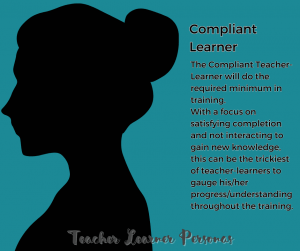 |
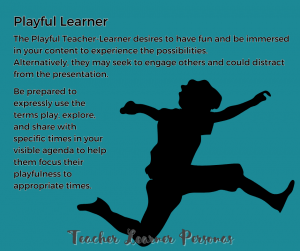 |
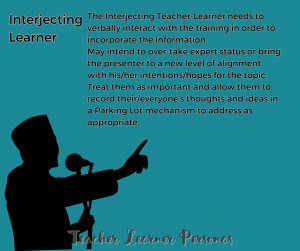 |
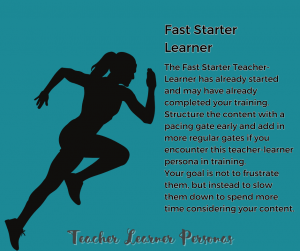 |
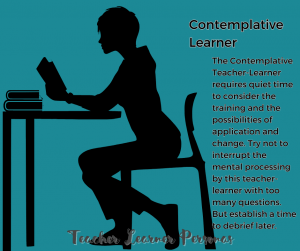 |
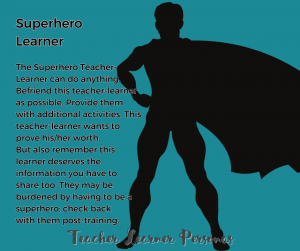 |
What other types of Teacher-Learner Personas can you come up with?
Surveys
Ask the champion/scheduler of your training to send out a survey link with the training information – catch them when they have the most interest in the training. Strive for a 3-5 minute survey to invite participation. If you use ratings, use even numbers to avoid the less-than-informative “average/medium” ratings. Consider if you can make the survey anonymous to reveal deeper feelings that may help you to know before arriving.
Interviews
If you can interview any stakeholders, interview as many of them as you can. Consider the champion/scheduler of the training for the big picture of how the training works with a larger vision. If the training is for a program or application that has been used by another colleague, ask to speak with them about any roadblocks or tips they have for your training. Consider interviewing any past completers of the training to find out which insights they gained from the training, what was the most helpful, and what was inaccurate or not helpful to them. After you have a good idea of past training and context, you may even consider interviewing future participants for their prior knowledge and expectations. The more stakeholders you are able to interview, the better your training will be.
Coordinate with Instructional Peers
Any place you are training there may already be instructional leaders on location who training too. While you may be an expert in specific knowledge, these instructional peers on site are experts in the teacher-learner in their building. Seek out these instructional leaders and work with them.
After learning about the learners and the broader context you are ready to craft some basic teacher-learner personas for any training – maybe all of your training opportunities!
References
Allen, M., & Sites, R. (2023). Leaving ADDIE for sam: An agile model for developing the best learning experiences. Association for Talent Development.
Alzate, V. (2021, May 20). How to develop learner personas for effective training. Main. https://www.td.org/atd-blog/how-to-develop-learner-personas-for-effective-training
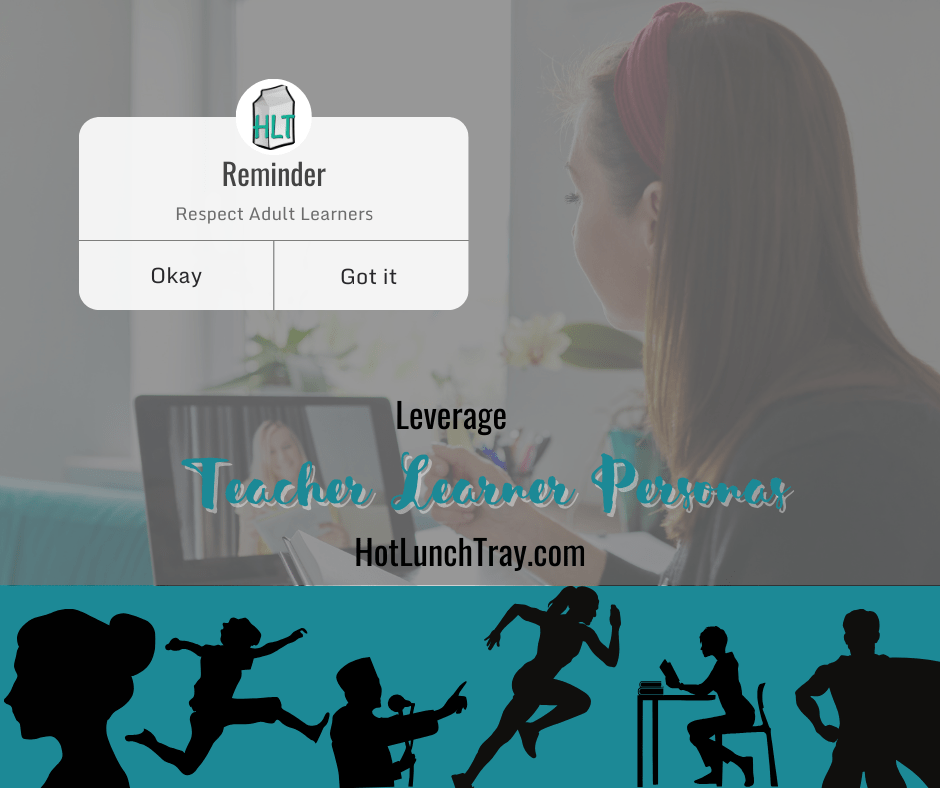

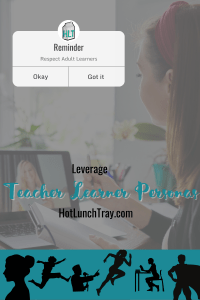




Leave a Reply